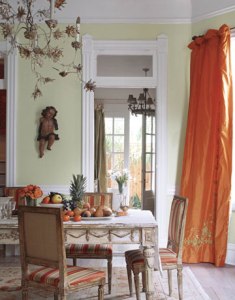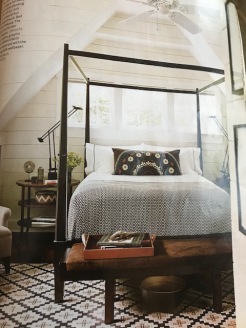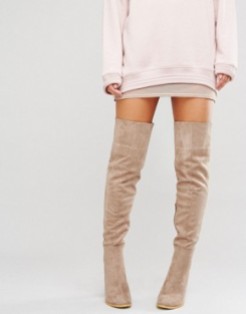What really lasts: Enduring decor

“What really lasts.” This is the theme of my favorite issue of House Beautiful, published in January, 2008, and it’s amazing to me that every picture in its pages has, in fact, lasted in its appeal. One of the core tenets of sustainability is durability, a quality in short supply these days. I’ve noticed a kind of liquidation quality to décor magazines over the last two years – garish color, insanely competing patterns and textures, weird 1970s and ‘80s references utilizing far too many finish materials that rely on mining, all within homes that are too new and (still, when will it end?) far too large.
This issue inspired my own home though I copied none of it exactly. Not all of it reflects my own personal taste – I don’t love rolled arm sofas; I wouldn’t choose Chinoiserie; some of it is too preppy for me. But the threads that run through it show us exactly what lasts.
In each feature the rooms are furnished comfortably, easily functional without large spaces to traverse between rooms or among pieces. There are balances of sizing – normal-scaled sofas and chairs in a relatively low-ceilinged living room are dominated by wall-sized oil paintings from the hunt. There is a balance of color — airy neutrals are interrupted by an oversized brown check on the armchairs; tall walls painted in the airy pale green of Benjamin Moore’s “Nantucket Breeze” are offset by long orange silk drapes, the color echoed in the striped upholstery of French dining chairs. Color is present but threaded through these palettes, allowing light to dominate.
In each layout the quality and location of the light is clear, whether it’s the cooler grey bright light filtering through the windows of an antique Newport, RI cottage, or the open, warm weight of the air in New Orleans. The home signals and responds to its surroundings, in a way that is both immediate and timeless. None feels “decorated” – that imposition of ideas that might not relate to the home’s geography or quality of life outside.
You can feel these houses. The soft hush of the home in Atlanta, pastels warmed by dark wood. The airy high ceilinged gorgeousness of the New Orleans townhouse, filled with antiques but made fresh with white trim and bare touches of gold. The cozy breeziness of the Newport cottage, all the way up to the toile covered tiny bedroom at the top of the stairs. You can be their guest. You would love to visit and stay, year after year after year.









































